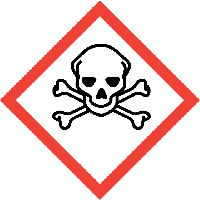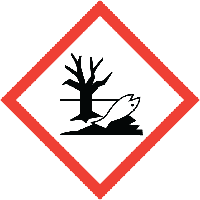- Materials
- Forms
-
Services
-
Services
-
-
Sectors
-
Supporting cutting edge research and development with advanced materials to your needs.
High performance materials for extreme conditions.
Innovative and lightweight materials with high mechanical properties and durability.
Materials used in chemical engineering from consumables to innovative solutions.
Advanced materials characterized by high electrical or insulation performance.
High quality materials for renewable energy.
Biocompatible and biodegradable materials to the highest standards.
High purity, biocompatible materials for high performance devices and applications.
High purity metals and alloys in various forms and crucibles suitable to your needs.
State of the art materials for the next generation of technologies.
High performance materials for extreme conditions.
Durable materials for corrosive environments.
Foils, disks or windows across a range of materials to facilitate your innovation.
Polymers, metal foils, and sustainable materials for your packaging needs.
Your requirements for unique products and attributes will be met across our 170,000+ product range and customization capabilities.
High-quality materials across branded products in various forms including rods, wires, and foils support space technology needs.
Highest quality materials to support your need for small-quantity specialist materials such as graphite and lithium compounds.
High purity materials to improve the reproducibility and reliability of your evaporation processes.
Academia Aerospace & Aeronautical Automotive Chemical Manufacturing Electronics and Bioelectronics Fuel Cells & Hydrogen Life Science and Biomaterials Storage & Batteries Vacuum Technology Mining and Metals Nanomaterials Nuclear Oil & Gas Optics Packaging Research & Labs Space Technology Medical Devices
-
-
Resources
-
Find out our latest news.
Read our latest insights, and opinions.
Discover our Innovation Discovered podcasts on innovation, products, interesting topics, and more.
Find out how we've worked with our partners
Our latest updates on what we are doing, find out more.
Find out more about us and the great roles we have available for talented individuals. Find out more.
Take a look at our global distributors.
Explore our FAQ resource to help answer your key questions.
Gain a clearer picture of the language used in scientific study
-
- About Us
Formula: Se
Form: Sputtering Target
Material: Selenium
CAS Number: 7782-49-2
Commodity: Metals
Thickness:
3mm
Diameter:
50mm
Hazard Pictogram:
GHS06, GHS08, GHS09
Our Selenium Sputtering Targets are valued in the semiconductor industry to deposit thin films of selenium onto substrates via physical vapor deposition. Selenium itself is a nonmetallic element that’s photoconductive with a high melting point. These properties mean that it’s used as a film in applications such as photovoltaics, photocopiers, light meters and solar cells. Providing a controlled, uniformed and reliable coating, Selenium Sputtering Targets meet the needs of both research and manufacturing.

Acute toxicity

Serious health hazard

Hazardous to the environment
Material Properties for Metals
Atomic Properties
| Element | Value |
|---|---|
| Atomic number | 34 |
| Crystal structure | Hexagonal |
| Electronic structure | Ar 3d¹⁰ 4s² 4p⁴ |
| Valences shown | -2,4,6 |
| Atomic weight( amu ) | 78.96 |
| Thermal neutron absorption cross-section( Barns ) | 12.2 |
| Photo-electric work function( eV ) | 5.9 |
| Natural isotope distribution( Mass No./% ) | 76/ 9.0 |
| Natural isotope distribution( Mass No./% ) | 82/ 9.2 |
| Natural isotope distribution( Mass No./% ) | 74/ 0.9 |
| Natural isotope distribution( Mass No./% ) | 80/ 49.8 |
| Natural isotope distribution( Mass No./% ) | 77/ 7.6 |
| Natural isotope distribution( Mass No./% ) | 78/ 23.5 |
| Atomic radius - Goldschmidt( nm ) | 0.116 |
| Ionisation potential( No./eV ) | 4/ 42.9 |
| Ionisation potential( No./eV ) | 6/ 81.7 |
| Ionisation potential( No./eV ) | 5/ 68.3 |
| Ionisation potential( No./eV ) | 1/ 9.75 |
| Ionisation potential( No./eV ) | 3/ 30.8 |
| Ionisation potential( No./eV ) | 2/ 21.2 |
Mechanical Properties
| Element | Value |
|---|---|
| Hardness - Mohs | 2 |
| Material condition | Polycrystalline |
| Poisson's ratio | 0.447 |
| Bulk modulus( GPa ) | 8.3 |
| Tensile modulus( GPa ) | 58 |
Electrical Properties
| Element | Value |
|---|---|
| Electrical resistivity( µOhmcm ) | 12@20@20°C |
Physical Properties
| Element | Value |
|---|---|
| Boiling point( C ) | 685 |
| Density( gcm⁻³ ) | 4.79@20°C |
Thermal Properties
| Element | Value |
|---|---|
| Melting point( C ) | 217 |
| Latent heat of evaporation( J g⁻¹ ) | 333 |
| Latent heat of fusion( J g⁻¹ ) | 69 |
| Specific heat( J K⁻¹ kg⁻¹ ) | 321@25°C |
| Thermal conductivity( W m⁻¹ K⁻¹ ) | 0.5@0-100°C |
| Coefficient of thermal expansion( x10⁻⁶ K⁻¹ ) | 37@0-100°C |
Other Customers Purchased
-
Nickel/Iron/Molybdenum Alloy Sputtering Target (Ni80/Fe15.5/Mo 4.5) Formula: Ni80/Fe15.5/Mo 4.5
Thickness: 3mm
Diameter: 50.8mm
UOM Code: 934-571-32
eachStarting at $361.99
Discounts applied for volume purchases -
Selenium Pellets Formula: Se
Percentage Purity: 99.999%
Maximum Lump Size: 3mm
Weight: 20g
CAS Number: 7782-49-2
UOM Code: 107-634-56
eachStarting at $263.32
Discounts applied for volume purchases -
Selenium Foil Formula: Se
Percentage Purity: 99.95%
Thickness: 3mm
Length 1: 10mm
Length 2: 10mm
CAS Number: 7782-49-2
UOM Code: 597-278-91
eachStarting at $449.31
Discounts applied for volume purchases -
Nickel/Vanadium Alloy Sputtering Target (Ni93/V 7) Formula: Ni93/V 7
Thickness: 3mm
Diameter: 76.2mm
UOM Code: 300-832-51
eachStarting at $449.41
Discounts applied for volume purchases -
Zinc Oxide/Gallium Oxide (2% GZO) Sputtering Target Formula: ZnO 98 / Ga2O3 2
Thickness: 5mm
Diameter: 25mm
UOM Code: 315-266-36
eachStarting at $724.88
Discounts applied for volume purchases -
Selenium Powder Formula: Se
Percentage Purity: 99.95%
Maximum Particle Size: 250µm
Weight: 300g
CAS Number: 7782-49-2
UOM Code: 246-830-13
eachStarting at $178.23
Discounts applied for volume purchases









